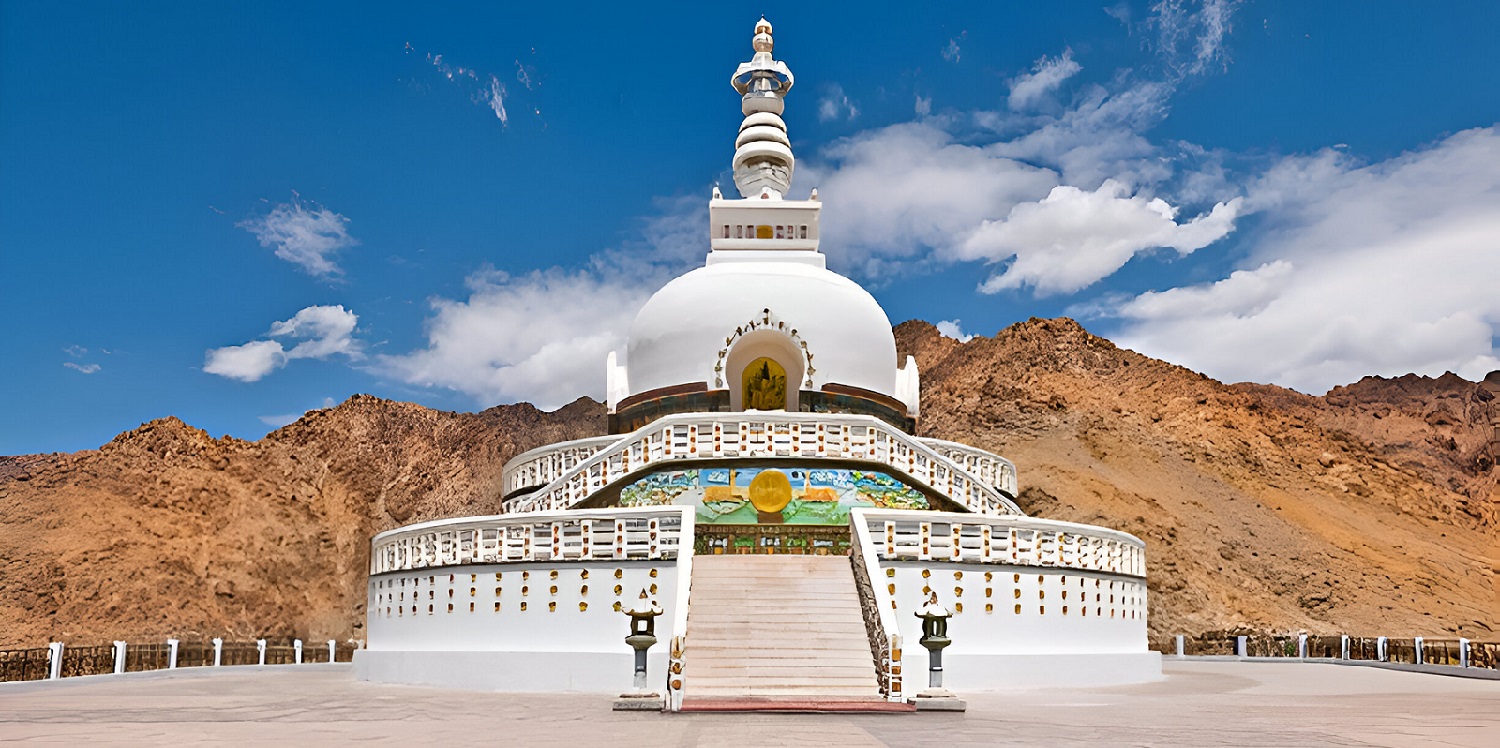Ladakh: A High-Altitude Haven of Culture and Adventure
Nestled between the Great Himalayas to the south and the Kunlun mountain range to the north, Ladakh is an area known for its profound spirituality, rich culture, and spectacular beauty. Ladakh, sometimes called the “Land of High Passes,” is a region of Jammu and Kashmir that is in the northernmost section of India. Ladakh is a sought-after destination for tourists from all over the world because of its distinctive topography, rich cultural legacy, and adventure options.
Geography and Climate
The topography of Ladakh is equally varied and striking. The area is distinguished by vast valleys, barren plains, towering snow-capped hills, and vivid blue lakes. It has some of the world’s highest motorable highways, such as the Chang La and Khardung La passes. At the peak of Saser Kangri, the elevation varies from 25,170 feet (7,672 meters) to around 9,000 feet (2,750 meters).
It has an extremely cold climate, with severe winters that can bring temperatures down to -30°C (-22°F) in certain places. Even though they are brief, summers are pleasant and perfect for travel. The area is a high-altitude desert with bleak scenery since it receives very little rainfall.
Cultural Heritage
Ladakh’s culture is deeply influenced by Tibetan Buddhism, which is evident in its numerous monasteries, festivals, and local traditions. The region is dotted with ancient gompas (monasteries) like Hemis, Thiksey, and Diskit, each offering a glimpse into the spiritual life of the Ladakhi people.
- Monasteries and Festivals: Monasteries serve as centers of learning, meditation, and cultural preservation. They host vibrant festivals that attract both locals and tourists. The Hemis Festival, celebrated in honor of Guru Padmasambhava, is one of the most famous, featuring masked dances and traditional music.
- Languages and Ethnicity: The primary language spoken is Ladakhi, a Tibetan dialect, although Hindi and English are also widely understood. The population is predominantly of Tibetan descent, with significant Muslim communities in Kargil and other areas.
- Traditional Dress and Cuisine: Traditional Ladakhi attire includes the “goncha” (a thick woolen robe) and “perak” (a headgear adorned with turquoise). The cuisine is hearty and suited to the harsh climate, with dishes like “thukpa” (noodle soup), “momos” (dumplings), and “skyu” (a type of pasta).
Natural Beauty and Adventure
Ladakh’s natural beauty is unparalleled, with landscapes ranging from lush valleys to stark deserts. The region is home to several high-altitude lakes, including Pangong Tso, Tso Moriri, and Tso Kar. These lakes, with their crystal-clear waters, are major attractions for tourists.
- Trekking and Mountaineering: Ladakh offers some of the most challenging and rewarding trekking routes in the world. Popular treks include the Markha Valley Trek, Chadar Trek (on the frozen Zanskar River), and the Stok Kangri climb. The rugged terrain, high altitudes, and breathtaking vistas make these treks a test of endurance and a feast for the eyes.
- River Rafting and Biking: The Indus and Zanskar rivers provide excellent opportunities for white-water rafting. The region is also a favorite among bikers, with routes like the Manali-Leh Highway and the Leh-Srinagar Highway offering exhilarating rides through some of the highest passes in the world.
- Wildlife: Ladakh’s unique ecosystem is home to rare and endangered species such as the snow leopard, Tibetan antelope (chiru), and black-necked crane. The Hemis National Park is particularly renowned for snow leopard sightings.
Spiritual and Historical Significance
Ladakh has a rich spiritual history, with Buddhism playing a central role in shaping its culture and identity. The region’s monasteries are not only places of worship but also repositories of ancient manuscripts, art, and artifacts. The “Chorten” (stupa) is a common sight, symbolizing Buddhist teachings.
- Leh Palace and Stok Palace: Leh Palace, modeled after the Potala Palace in Lhasa, offers panoramic views of Leh town and the surrounding mountains. Stok Palace, the residence of the erstwhile royal family, houses a museum with royal artifacts and Buddhist relics.
- Alchi Monastery: One of the oldest and most significant monasteries in Ladakh, Alchi is known for its well-preserved wall paintings, which date back to the 11th century. The monastery provides insight into the region’s artistic and spiritual heritage.
Ladakh’s food culture
Ladakh’s cuisine is a reflection of its harsh climate and Tibetan influences. Traditional dishes are hearty and nourishing, designed to provide energy in the high-altitude environment. Thukpa (noodle soup) and momos (dumplings) are staples, often enjoyed with tsampa (roasted barley flour). Butter tea (gur-gur chai), made with yak butter and salt, is a local favorite, providing warmth and sustenance. Skyu, a pasta dish with root vegetables and meat, is commonly prepared during winter. It’s cuisine emphasizes simplicity, using locally sourced ingredients and preserving age-old cooking traditions, making it both practical and deeply cultural.

Modern Developments and Challenges
Ladakh has witnessed notable advancements in infrastructure and tourism in the past few years. The region has benefited from increased road connectivity, greater healthcare facilities, and the adoption of sustainable tourist techniques.
These advancements do, however, present some difficulties. The delicate ecosystem of Ladakh faces challenges from growing tourism, trash disposal, and climate change. Water resource conservation and the usage of biodegradable products are two ways that eco-friendly tourism is being promoted.
Conclusion
Ladakh is a land of contrasts and surprises. Its stark landscapes, spiritual depth, and cultural richness offer a unique experience that stays with visitors long after they leave. As Ladakh navigates the balance between development and conservation, it remains a beacon of natural beauty, adventure, and timeless traditions. Whether seeking spiritual solace, thrilling adventures, or simply the serene beauty of high-altitude deserts, Ladakh has something to offer everyone.
